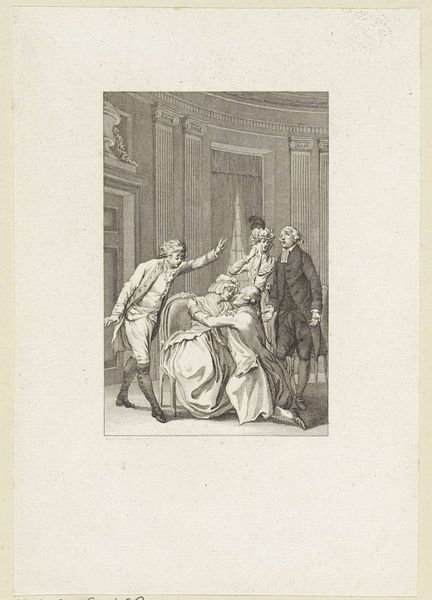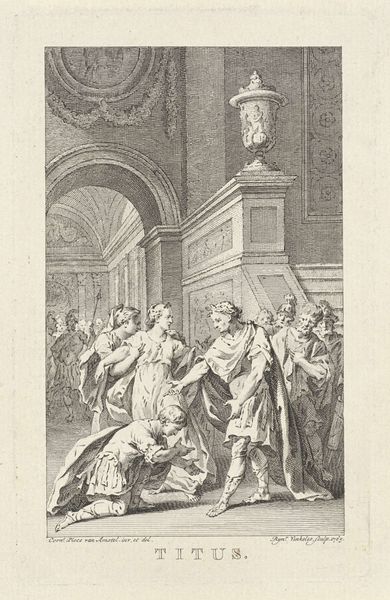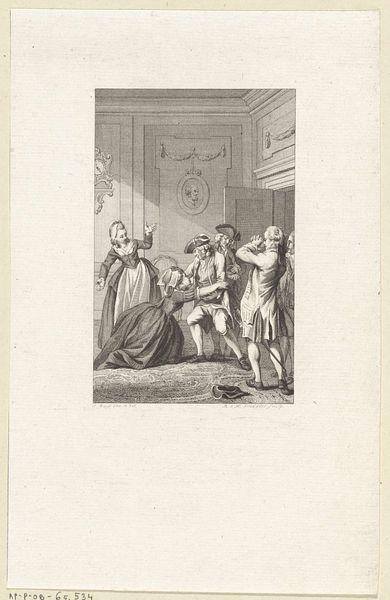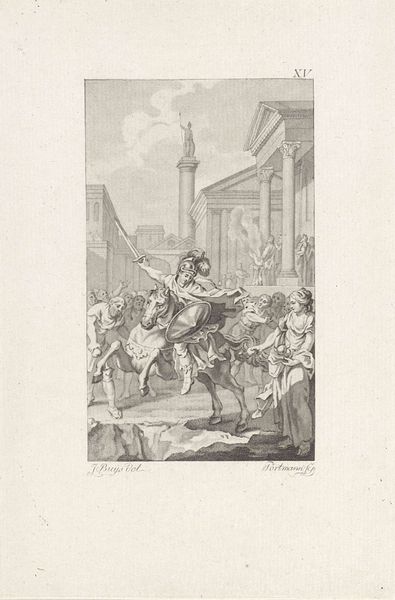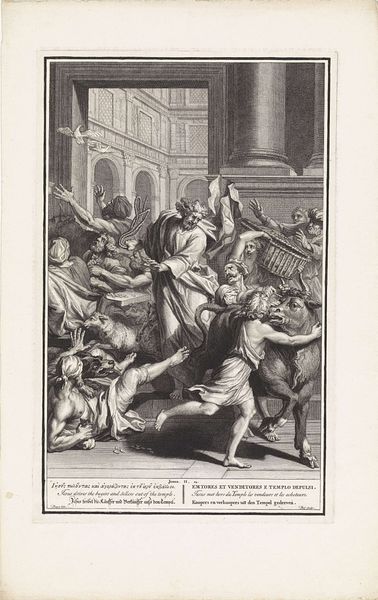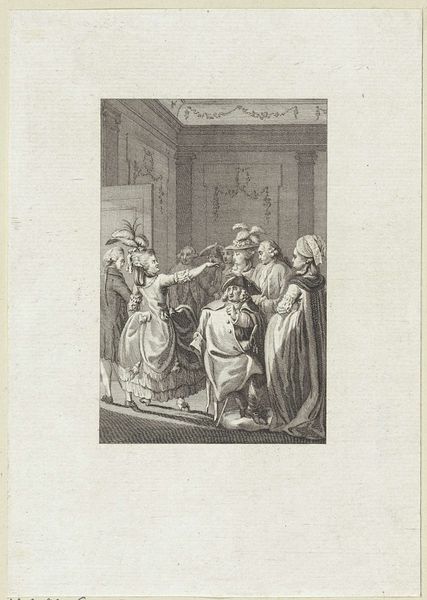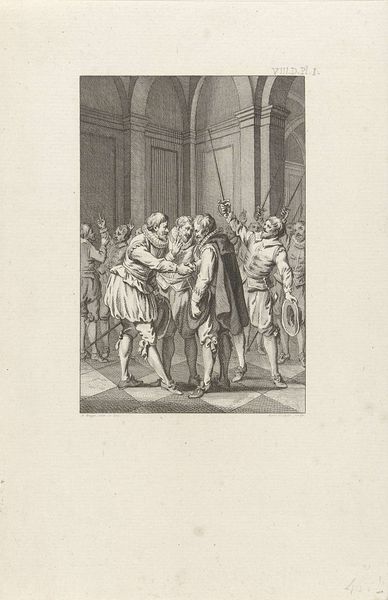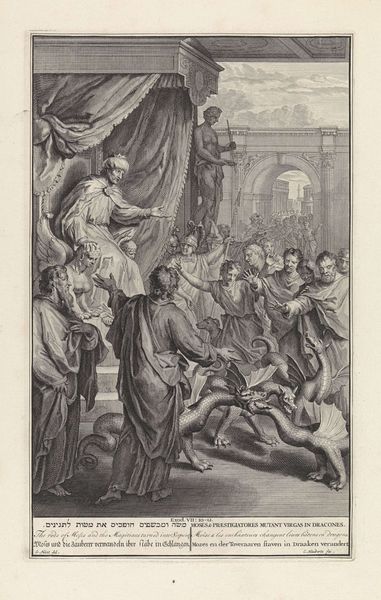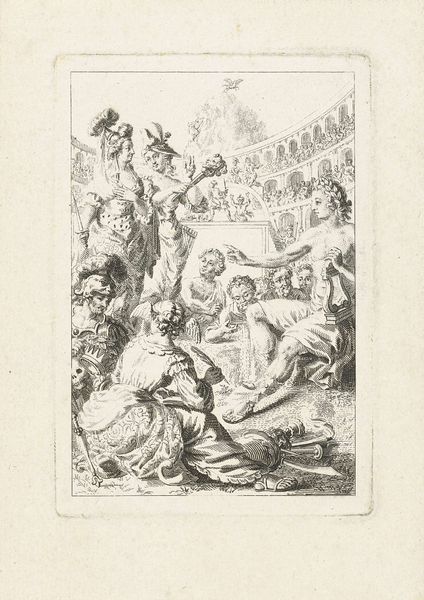
Dimensions: height 200 mm, width 149 mm
Copyright: Rijks Museum: Open Domain
Curator: Well, immediately I feel the terror. The drama is palpable, even through the precise lines of the engraving. Editor: This is “The Murder of Aleid van Poelgeest, 1392” by Reinier Vinkeles, made in 1794. What we are seeing is an historical re-enactment, filtered through the lens of late 18th century engraving practices. The production of prints like these served multiple functions. It was a vehicle to spread morality tales to a wider audience. Curator: Yes, you feel the morality in the stark contrast between the light and shadow, a perfect setting for something truly horrible to unfold. And I am just trying to imagine what it was like to produce this, to manually craft such an intricate narrative using just a metal plate. Editor: Precisely! And remember that engravings like this were products of a very particular system. Apprentices would’ve worked on the backgrounds, less skilled labourers doing much of the production under the watchful eye of the master printmaker who designs and adds the key details. Consider the relationship between craft and the communication of historical narratives, even in pre-mass media times! This print relies upon specialized skills to construct the "truth" for its consumers. Curator: So, what you're saying is, the narrative isn't just about what happened to Aleid, but also a reflection of how art and historical knowledge were produced and consumed at the time? Editor: Precisely, to me, it is an early exercise in shaping public opinion via readily reproducible images. Curator: Well, it is really disturbing and technically impressive, knowing everything involved in making it only enriches the image further. Editor: Yes, it's more than just a history lesson—it is a potent reminder of the power of production, material culture and perspective, even within art.
Comments
No comments
Be the first to comment and join the conversation on the ultimate creative platform.
